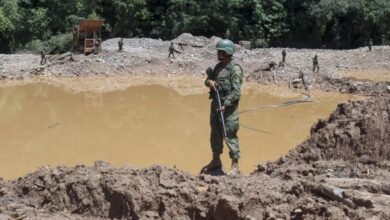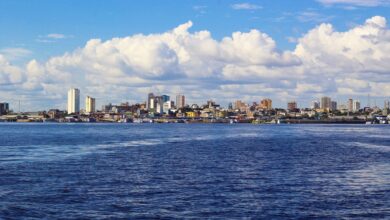What Are the Vital Signs Of the Earth And Why Are They In Danger?
If We Do Not Act Now, the Planet Will Enter the Climactic Points Of No Return.

The report was published in the journal BioScience where the signing experts assure that the governments of the world have been a total failure to stop the origin of climate change. Photo: Adobe Stock
LatinAmerican Post | Brandon Martínez Salazar
Listen to this article
Leer en español: ¿Cuáles son los signos vitales de la tierra y por qué están en peligro?
For a couple of years, more than 14,000 experts have been warning about the emergency that climate change represents for our planet and the consequences of man's irresponsibility regarding his actions on nature.
Last Wednesday, July 28, the same group of scientists who have been in charge of monitoring this situation issued a worrying statement stating that the vital signs of the planet are drastically weakening and that it is likely that we are approaching the "points of no return".
This report was published in the journal BioScience where the signing experts assure that the governments of the world have failed to stop the origin of climate change, overexploitation of nature and its resources. In this way, of the 31 vital signs of the planet, 18 have already reached the most worrying levels, they explain in the article.
Also read: Opinion: The Failure of the Paris Agreement Predicts the Failure of the other Treaties
On the other hand, the study highlights that there are already more than 4,000 million head of cattle around the world, an amount that exceeds the combined mass between humans and all wild animals, which causes great risks for the increase in the global emergency.
Cabezas de ganado en el mundo pic.twitter.com/QoHnyjrTwb
— Gualestrit (@gualestrit) October 2, 2019
Tim Lenton, one of the authors of the study, from the University of Exeter, said: "We have to react to the evidence that shows that we are heading towards climatic points of no return."
Although gas emissions had temporarily reduced thanks to the pandemic, the truth is that during 2021 carbon dioxide concentrations reached unimaginable levels that make it clear that circumstances have not improved at all.
If the nations of the world do not start to really focus on what is happening, for example, with glaciers that have been melting 31% faster than 15 years ago and the deforestation of the forests of the Amazon that marked its record high In 2020, humanity must prepare for the end of what we know as life.
What are the vital signs of the earth?
Vital signs are the signals that alert the conditions of life on the planet. Although 31 signs have been established, 5 are fundamental to understand the impact of man on the environment, which the current circumstances have produced:
- Climate change: Although the earth has always had fluctuations in its temperature, since the Industrial Revolution the planet has suffered an unstoppable increase in temperature, especially in recent decades. The idea with the Paris Agreement was not to exceed 2 degrees and stay below 1.5 degrees.
- Atmospheric CO2 : Carbon dioxide is a greenhouse gas that collects heat in the atmosphere and, therefore, contributes to global warming. Since the Industrial Revolution began, the impact of this gas on the planet has exceeded the levels of the entire history of the earth.
- Greenland Ice Mass: Until the 1990s the ice mass in the Northern Hemisphere had remained stable. Nonetheless, Greenland is now losing roughly 280 gigatons of ice each year, while Antarctica is losing 150 gigatons at the same time.
- Sea level: Due to the amount of greenhouse gas emissions the ice at the poles has been melting at a chilling rate and, therefore, sea levels have risen. It is estimated that there is an increase of between 3 and 4 mm per year and it is predicted that by the end of the century the sea would increase by one meter, which would have serious consequences for underdeveloped nations and coastal cities.
- Deforestation: Deforestation contributes to climate change as wet soils without the protection of trees dry out quickly. Causing great droughts and future famines in certain places.




